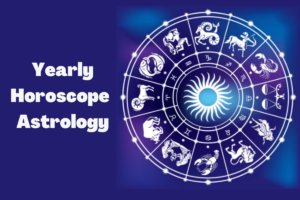Astrological aspects represent the dynamic relationships between celestial bodies in the cosmos, providing invaluable insights into the intricate interplay of planetary energies. These aspects form the foundation of astrological interpretation, offering a nuanced understanding of personality traits, relationship dynamics, and life events. In this exploration, we delve into the significance of astrological aspects, their classification, interpretation, and practical applications in astrology.
Understanding Astrological Aspects
Astrological aspects occur when planets, points, or angles in a birth chart form specific geometric angles with each other. These angles represent energetic connections that influence the expression of planetary energies and shape individual experiences. Aspects can be harmonious, indicating ease and flow, or challenging, signaling tension and conflict. By examining the patterns formed by these aspects, astrologers gain insight into the underlying dynamics of a person’s chart and the potential manifestations of planetary energies in their life.
Classification of Astrological Aspects
Astrological aspects are classified based on the angular distance between planets, measured in degrees. The most common aspects include:
- Conjunction (0 degrees): Occurs when planets are in close proximity to each other, blending their energies and intensifying their effects. Conjunctions can amplify both positive and negative qualities associated with the planets involved.
- Opposition (180 degrees): Forms when planets are directly across from each other in the zodiac, creating tension and polarity. Oppositions highlight the need for balance and integration between opposing forces or desires.
- Trine (120 degrees): Represents harmonious flow and support between planets, indicating ease and opportunities for growth. Trines facilitate creativity, cooperation, and natural talents.
- Square (90 degrees): Signifies tension and challenges between planets, prompting growth through conflict and adversity. Squares often catalyze change and motivate action to resolve inner or outer conflicts.
- Sextile (60 degrees): Indicates opportunities for growth and development, facilitating communication and collaboration between planets. Sextiles encourage exploration and expansion of potentials.
- Quincunx (150 degrees): Creates a sense of discomfort and adjustment between planets, prompting adaptation and refinement of strategies. Quincunxes highlight areas of imbalance or incongruence that require attention and adjustment.
Interpretation of Astrological Aspects
Interpreting astrological aspects involves understanding the qualities and energies associated with each planet involved, as well as the dynamics of the aspect itself. Harmonious aspects typically indicate areas of strength, talent, and ease, while challenging aspects may signify areas of tension, conflict, or growth. The signs and houses involved in the aspect further refine its expression, providing context and specificity to its interpretation. Astrologers analyze the orbs, or allowable degrees of deviation from exactness, to determine the strength and potency of each aspect.
Practical Applications of Astrological Aspects
Astrological aspects offer valuable insights and guidance in various areas of life, including:
- Personality Traits and Behavioral Patterns: By examining the aspects in a birth chart, astrologers can uncover underlying personality traits, strengths, and challenges. Harmonious aspects may indicate areas of natural talent and ease, while challenging aspects may point to areas of struggle or potential growth.
- Relationship Dynamics: Astrological aspects between individuals’ charts provide insights into compatibility, communication styles, and areas of synergy or conflict in relationships. Harmonious aspects foster understanding and connection, while challenging aspects may require conscious effort and compromise to overcome differences.
- Timing of Events: Astrological aspects are used to time significant events and transitions in a person’s life. Transits, or the movement of planets in the sky, form aspects to points in a person’s natal chart, indicating periods of opportunity, challenge, or change. By analyzing these transits, astrologers can anticipate potential themes and developments in a person’s life.
- Personal Growth and Development: Understanding astrological aspects can support personal growth and self-awareness by highlighting areas of strength and areas for improvement. Challenging aspects may indicate opportunities for growth through overcoming obstacles and transforming limitations into strengths.
As we deepen our exploration of astrological aspects, we uncover additional layers of insight and understanding that enhance our grasp of this fundamental aspect of astrology. Let’s delve into some key areas in greater detail:
1. Aspect Patterns and Configurations: Astrological aspects can form intricate patterns and configurations within a birth chart, revealing deeper layers of meaning and complexity. Some common aspect patterns include Grand Trines, T-Squares, and Yods, each carrying its own unique energy and symbolism. These patterns provide additional context and depth to the interpretation of planetary energies, highlighting themes of harmony, tension, and potential resolution.
2. Planetary Rulerships and Dignities: The concept of planetary rulerships and dignities further enriches our understanding of astrological aspects. Each planet rules over certain zodiac signs and houses, and its placement in a chart can influence the expression of other planets through aspects. For example, a planet in its own sign or exalted position may strengthen its influence in forming aspects with other planets, while a planet in its detriment or fall may struggle to express its energy harmoniously.
3. Synastry and Composite Charts: Astrological aspects play a crucial role in synastry, the comparison of two individuals’ birth charts to assess compatibility and relationship dynamics. By analyzing the aspects between planets in each person’s chart, astrologers can gain insights into the strengths, challenges, and overall compatibility of the relationship. Composite charts, which combine the midpoints of each person’s planets to create a single chart representing the relationship, also rely heavily on astrological aspects to illuminate the dynamics between the individuals involved.
4. Progressions and Directions: In addition to natal aspects, astrological aspects are also important in progressions and directions, which describe the evolution of a person’s chart over time. Progressed aspects, formed as the positions of planets gradually shift in relation to the natal chart, indicate key developmental phases and periods of growth or challenge in a person’s life. Similarly, directions, which involve the movement of planets through the houses of the chart, provide insights into the timing of significant events and transitions.
5. Aspect Patterns in Mundane Astrology: Astrological aspects are not only relevant on an individual level but also play a crucial role in mundane astrology, which examines collective trends and events. Aspect patterns formed between planets in the sky at specific times can indicate significant societal shifts, geopolitical developments, and natural phenomena. By analyzing these patterns, mundane astrologers provide insights into global trends and potential areas of focus for collective growth and transformation.
6. Transits and Timing: Astrological aspects formed by transiting planets to points in the natal chart offer valuable insights into the timing of events and developments in a person’s life. Major transits, such as the Saturn return or Jupiter’s transit through the natal houses, mark significant milestones and periods of growth or challenge. By understanding the dynamics of these transits and their aspects to the natal chart, individuals can prepare for and navigate important life changes with greater awareness and resilience.
7. Evolutionary Astrology and Karmic Patterns: In evolutionary astrology, astrological aspects are viewed through the lens of soul growth and karmic evolution. Planetary aspects in the natal chart and their activation through transits and progressions are seen as indicators of soul lessons and evolutionary intentions. By exploring the karmic patterns and unresolved dynamics symbolized by astrological aspects, individuals can gain deeper insights into their life’s purpose and spiritual journey.











+ There are no comments
Add yours